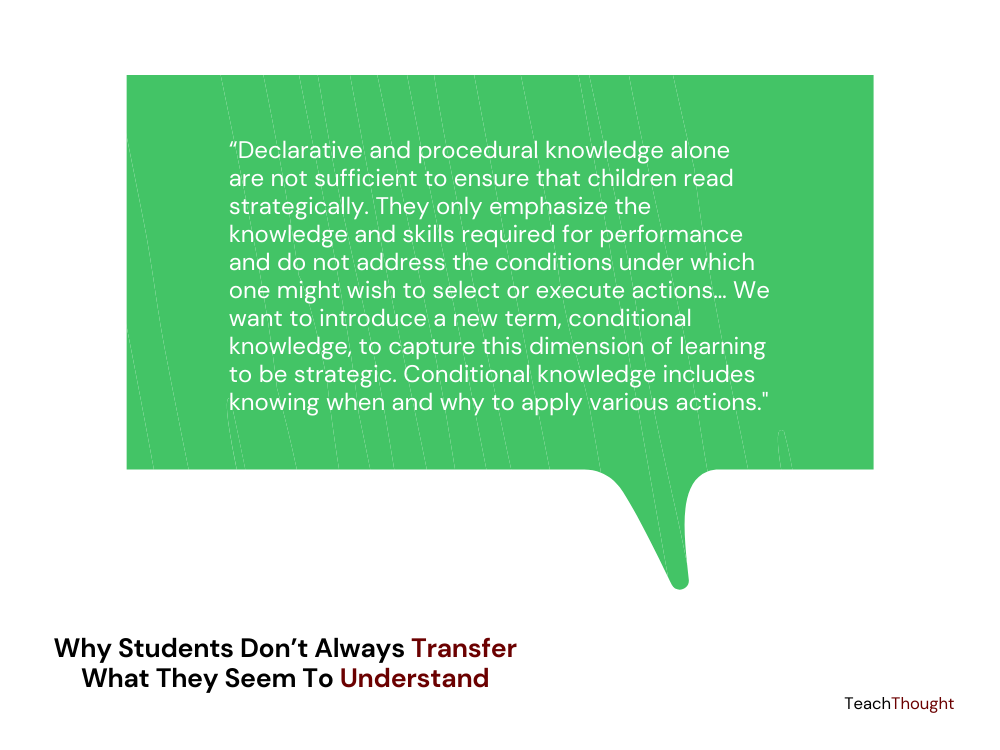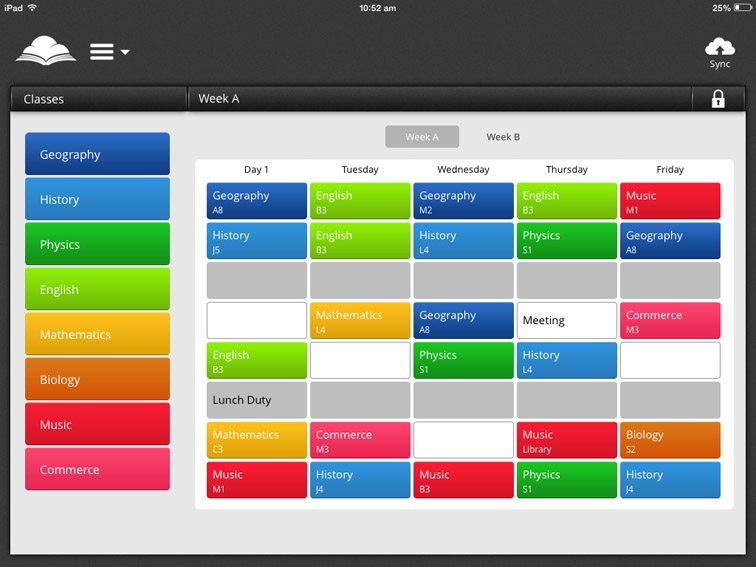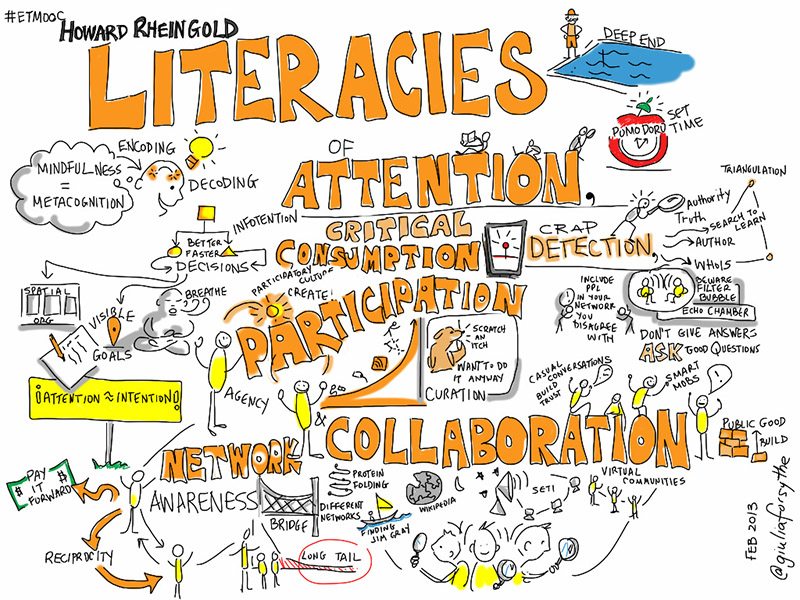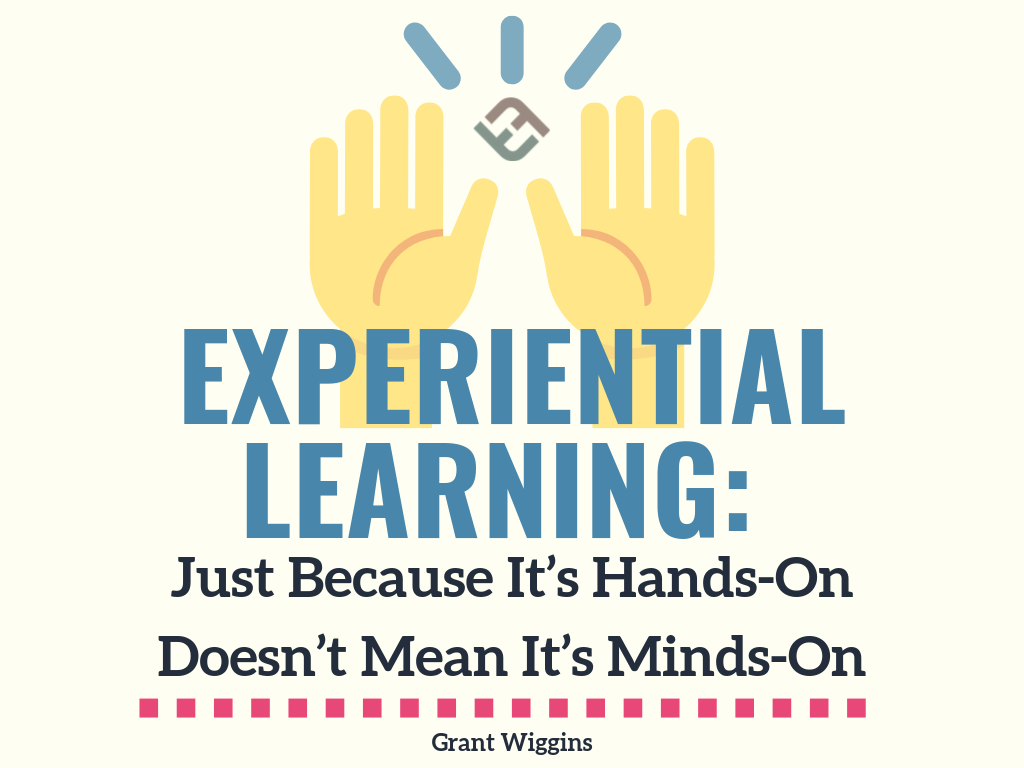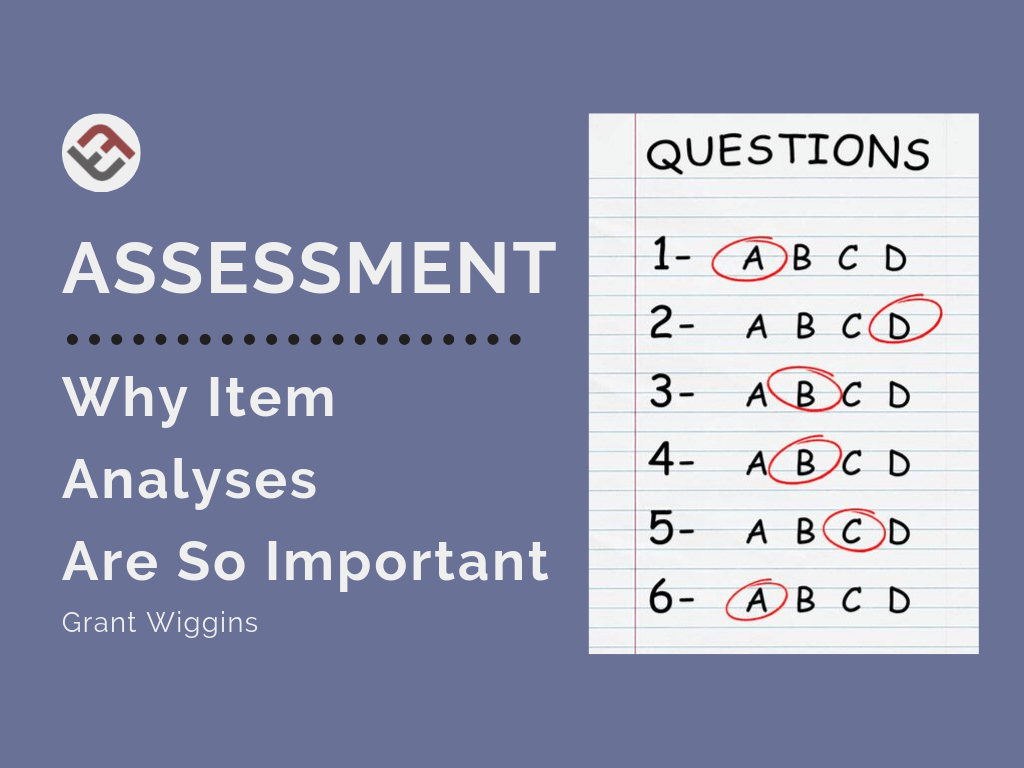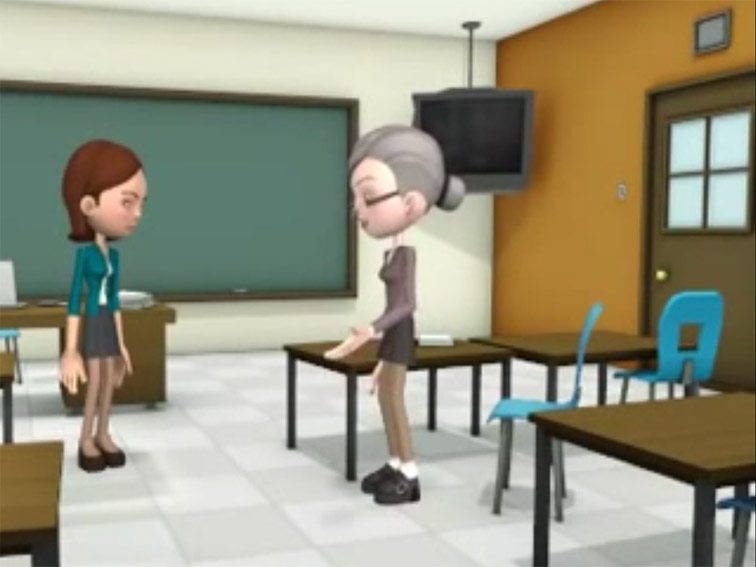Why Students Don’t Always Transfer What They Seem To Understand
Why Students Don’t Always Transfer What They Seem To Understand Read More
Conditional knowledge includes knowing when and why to apply various actions. This is crucial to the ongoing transfer of learning.
